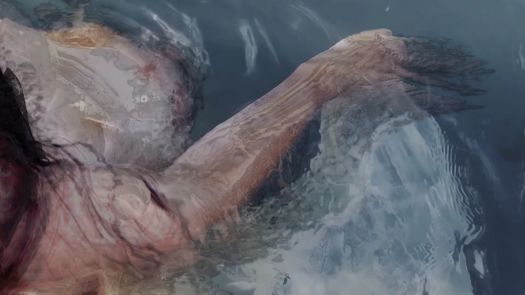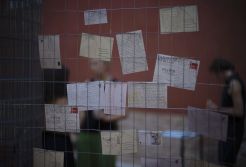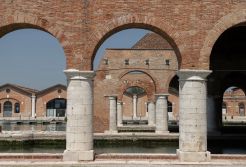A collaboration between Videocity and MA in Contemporary Curating 2025: “Terraforming Otherwise”
13 July 2025
Join us for students-led exhibition projects that will be launched at the Holden – Dark Gallery
This exhibition is a collaboration between Videocity and Manchester School of Art’s MA in Contemporary Curating programme. As part of a student placement scheme, two curators from the course have each developed a curated compilation of video works in response to Videocity’s 2025 theme: Posthuman. Exploring diverse perspectives on the posthuman condition, each compilation reflects a unique curatorial voice, ranging from technological entanglements to ecological futures and speculative bodies.
Dates:
Launch/opening: Wednesday 23rd July 2025, between 16.00-18.00 pm
Open to the public: Thursday 24th – Wednesday 30th July, between 10.00-17.00 pm
Artists: Eddie Lohmeyer, Buket Yenidogan, James Davoll, Kin
School of Digital Arts, MA Students:
Rachael Garvey, Joseph Wright, Neve Clearie, Amelia Rennison, Rebeca Rodriguez Gomez, Sankalp Mohanty, Dylan Jones, Jennifer Smith, Ella Kosmin, Jack Lewis, Paul Turner, Penny Wong, Yekta Tabibi
Project curators: Charlotte Furlong and Beatrice Jane Penny
Curatorial advice: James Stephen Wright, Co=director Videocity UK
Venue: The Holden – Dark Gallery
Grosvenor Building, Metropolitan University, Manchester M15 6BR

Curatorial Statements:
Charlotte Furlong –
In an era where the boundaries between the human and the non-human are increasingly fluid, the Posthuman discourse encapsulates the evolving narratives of identity, embodiment, and existence. For this screening, video artworks have been selected that interrogate the potential of posthuman landscapes through the intertwined lenses of technology, ecology, and consciousness. In “Terraforming Otherwise” artists are exploring Posthumanism from varying professional and academic perspectives, developing potential narratives for the future of our planet beyond human existence.
Edwin Lloyd Lohmeyer’s “Fuyu.02”, from his “terra_forms” series, reimagines ecological collapse through posthuman perspectives, using glitch aesthetics, AI diffusion models, and environmental sensors to explore the role of AI as a collaborator in envisioning climate futures. Drawing on 19th- century panoramas, Ukiyo-e, and video game aesthetics, the work constructs speculative Appalachian landscapes where ritual, myth, and machine intertwine. Rather than framing terraforming as human colonisation, “terra_forms” presents it as an artistic, non-human-led practice that centres the intelligence of fungi, animals, and plants—challenging anthropocentrism and inviting ethical reflection on Earth as a creative partner.
Providing a different posthuman perspective, Buket Yenidogan is a Turkish multi-disciplinary artist and researcher who is investigating more-than-human futures through speculative mythology and technology. She combines her background in engineering and arts to craft interactive experiences and computational performances to explore the philosophical concept of posthumanism. Yenigogan’s AV series “Leaking Into” explores an ocean dwelling posthuman culture, investigating the themes of immigration, primordial ancestry, and kinship. Focusing on the ocean as a posthuman landscape and place of migration, “Leaking Into” draws on current climate issues to present a posthuman narrative.
Alongside these works, the video “Adlais” by James Davoll investigates the abandoned environment of Dorothea and Pen-Yr-Orsedd Slate Quarries in Wales. Davoll depicts this space as an already present post-human landscape through his representation of a once industrial space as eerie and deserted. “Adlais” approaches posthumanism not as a post-apocalyptic event, but rather as an ongoing microcosmic pattern of human behaviour.
Furthering this inquiry selected videos from Manchester Metropolitan’s School of Digital Arts “Umwelt” and “When Is Too Far Gone?” depict posthuman landscapes developed through an informed investigation into ecological impacts of human interference. “Umwelt” introduces wetlands as a posthuman environment using macro photography to explore the environment from a non-human perspective, whilst “When Is Too Far Gone?” visualises the environmental impacts of the use of crude oil. Both pieces highlight current environmental issues caused by humans, contributing to the formation of posthuman landscapes.
“The Dissolve” by Kin provides an alternative posthuman digital landscape, in which algorithms can control collective experience and ways of life. This position suggests that posthumanism develops in a digital and intangible world alongside humans which could govern both human and technological systems.
Collectively, these works reframe posthumanism as an urgent and imaginative lens through which to question our ecological, technological, and existential futures, inviting us to engage with a world where the human is no longer at the centre.
Beatrice Jane Penny –
In the complex realm of Terraforming Otherwise, research is furthered by extended ecological investigation, examining the decrease of collective movement as a symptom of a posthuman society.
Within this, “The Colony Club” (video work by Ella Kosmin, Jack Lewis, Paul Turner, Penny Wong, and Yekta Tabibi) shows the importance of ecological living in motivating social change through reconnecting to vital environmental providers. Drawing from Manchester’s deep connection to the bee as a symbol for unity, the video follows an imagined perspective from within a hive through dreamlike choreography, experimental camera work, and an immersive soundscape based on real bee frequencies to explore the intricate fragile world of pollinators..
The researcher Stacy Alaimo provides additional context through her seminal text on Transcorporeality, presenting it as a solution for overcoming community isolation by fostering a fluid connection between humans and the natural world. This movement, rooted in eco-culturalism, addresses the repercussions of a man-made society. It positions “The Colony Club” as a speculative tool for envisioning a future that embraces embodied knowledge and alternative ways of being together.
Further information:
Facebook: http://facebook.com/videocity.bs
Instagram:https://www.instagram.com/videocity_bs
Website: www.videocity.org
Reference project page: https://www.videocity.org/this-lonely-world
Videocity:
Videocity is an artist-curator network and public art project founded in Basel in 2013; and later expanded to England in 2021, in collaboration with Polina Chizhova and James Stephen Wright. Its mission is to support video artists and present video art addressing current social issues to diverse audience in public spaces, both indoors and outdoors, particularly in unconventional locations. The NGO was initiated by Dr. Andrea Domesle and is now composed of an international team of 20 colleagues and a large network of global partners. In 2019, Videocity received the Swiss audio-visual heritage designation (Kulturgut der Schweiz), marking the first time a curatorial project was honored with this recognition in Switzerland. Since its inception, nearly 300 video works have been presented to the public in Basel and internationally.
The nomadic program takes place in various locations and contexts, from Ramadan celebrations in Abu Dhabi to indigenous community spaces in Tehuantepec, and, starting in March 2024, in Ukraine. We maintain ongoing partnerships with institutions such as the Markthalle Basel, Cinema REX in Bern, Motorenhalle in Dresden or the city trail in St. Pölten Austria organized through our Austrian Videocity colleagues.
In the UK, we have previously collaborated with The NewBridge Project, the Grainger Market in Newcastle and SET Studios in London.



